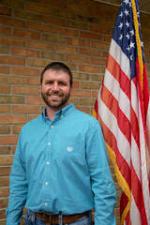Wellhead Protection Program
What is water?
To first understand what the Wellhead Protection Program is we need to define water and discuss where water comes from. Water is an odorless, tasteless, colorless liquid made up of hydrogen and oxygen. Water is a necessary component of human survival and is a vital part of Michigan's economy. In fact, Michigan is home to approximately 20% of the Earth's usable fresh water. There are two types of water, groundwater and surface water.
GROUNDWATER - water that is underground in cracks and spaces in the soil, sand and rocks.
SURFACE WATER - water that is above the surface of the land (i.e. lakes, rivers, streams).
Water moves through a continuous cycle known as the Water Cycle. The Water Cycle is the path that water takes through its various states as it moves throughout the atmosphere. First a vapor becomes a liquid through condensation. Second, the liquid (rain, snow, sleet) falls to the ground through precipitation. Third, the water either seeps into the ground, forming groundwater or it runs off the surface of the land, forming surface water. Finally, the liquid converts back into vapor and evaporates up into the atmosphere through evaporation.
What is groundwater?
Groundwater fills the small spaces between rock particles (sand, gravel, etc.) or cracks in solid rock. Rain, melting snow, or surface water becomes groundwater by seeping into the ground and filling these spaces. An aquifer is any type of geologic material, such as sand or sandstone, which can supply water to wells or springs.
Groundwater, which supplies wells, often comes from within a short distance (a few miles) of the well. How fast the groundwater moves depends on how much the well is pumped and what type of rock particles or bedrock it is moving through.
In the United States, groundwater is the source of drinking water for half of the total population and 95% of the rural population. Groundwater is also used for raising livestock, agriculture, and industry. Within Michigan, approximately 50% of the population relies on groundwater to supply their drinking water needs. Community drinking water systems are at risk from many possible contamination sources and no community wants to face the loss of its drinking water.
In an effort to protect this valuable resource, the State of Michigan established the Michigan Wellhead Protection Program (WHPP). This program is a voluntary program for communities that use groundwater to supply their wells.
What is the Wellhead Protection Program?
First, it is important to determine the area which contributes groundwater to the public water wells. Communities will hire a consulting firm to do a thorough review of the groundwater that is supplying the drinking water wells. This study will determine how fast the groundwater is flowing and in what direction the groundwater is flowing. This area is called the Wellhead Protection Area (WHPA). At the edge of this area, it would take ten years for contamination to reach the community wells. This is the area that communities will manage and protect. Steps to manage and protect this area include:
ESTABLISH A TEAM – Identify people that play an important role in groundwater protection. Examples: managers, water superintendents, zoning administrators, teachers, fire department officials, business leaders, farmers and residents.
CONTAMINANT SOURCE INVENTORY – Identify known and potential sites of contamination within the WHPA and include in a contaminant source inventory list and map.
MANAGEMENT STRATEGIES – Provide mechanisms that will reduce the risk of contamination. Examples: plugging abandoned wells and implementing zoning ordinances.
CONTINGENCY PLANNING – Develop a contingency plan in case of a water emergency.
PLAN FOR NEW WELLS – Provide information on existing groundwater availability, the need for new wells and the vulnerability of the existing wells to contamination.
PUBLIC EDUCATION – Educate the public about drinking water protection through brochures, placemats, presentations, newsletters and other educational activities.

